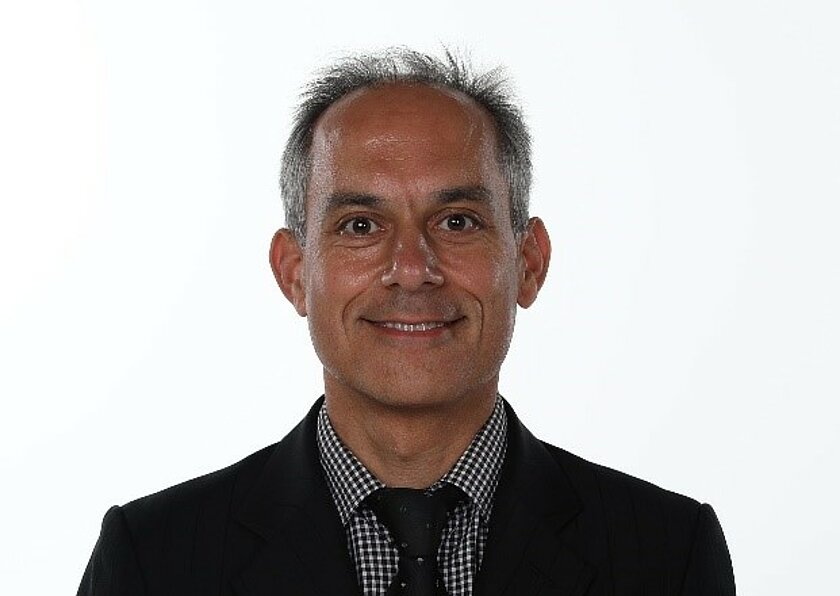The interlocutors
Patrick Da-Cruz is Professor of Business Administration and Health Care Management at the Faculty of Health Care Management at Neu-Ulm University (HNU) and Scientific Director of the MBA program Leadership and Management in Healthcare.
Before joining HNU, Mr. Da-Cruz worked for well-known strategy consultancies in the pharmaceutical / healthcare sector as well as in management positions in companies in the healthcare industry in Germany and abroad.

Roger Jaeckel is an honorary professor at the Faculty of Health Care Management and has held a senior position in the health care industry since 2004, focusing on health care policy, market and patient access. In addition, he is chairman of the advisory board of HNU's MBA program Leadership and Management in Healthcare. He is the author of numerous publications and papers on health policy and health care, including co-editor of two books on market access in health care.

On July 10, 2023, after more than six months of tough wrangling, the federal and state governments finally agreed on key points that are to point the way to future hospital care. What is your first spontaneous assessment of the current key points paper?
Prof. Jaeckel: First of all, the political will to reach an agreement has prevailed to get such a fundamental hospital reform underway. The political pressure at both federal and state level to reach agreement on the core of the reform was too great. Failure of this reform would indeed not have been an option to evade this political responsibility. Whether, in the end, the consented key points actually represent a great moment in German healthcare policy remains to be seen in the course of practical implementation.
Were there some surprising moments for you on the way to this result?
Prof. Jaeckel: On the one hand, there was one "no" vote from Bavaria and one abstention from Schleswig-Holstein, but this was irrelevant for a majority decision by the states. On the other hand, the knot around the introduction of hospital levels was untied in that this point, with the exception of "Level Ii hospitals" [cross-sector providers; editor's note], was removed from the cornerstones and introduced into a formal legislative procedure in a separate "Quality Transparency Act" at the same time by the federal government and without the involvement of the states. This procedure is formally permissible. In the case of Level "Ii hospitals," the states have left their mark, so that the effort to achieve cross-sector patient care is likely to receive a new boost as a result. In the further legislative process, it will be important to ensure that the legal framework is sensibly designed and, above all, that the relevant financing issues serve as an incentive for future site operators.
How do you envisage the implementation of the individual reform elements in concrete terms?
Prof. Jaeckel: In very brief terms, the so-called service groups form the core of this reform. By the end of 2025 at the latest, the federal states must have assigned the hospital-specific service groups to their hospitals by way of an assessment notice. On this basis, the hospitals will initially be allocated a flat-rate budget for two years, i.e. from 2025 at the earliest and 2026 at the latest, depending on how quickly the states implement this service group allocation. The budget share for the reserve financing, including nursing staff costs, is to amount to an average of 60% of the total budget.
The new form of reserve financing will be based on the service groups actually allocated, with service-sensitive areas such as stroke units, intensive care medicine and (inpatient) emergency care receiving a staggered surcharge based on the scope of services provided in order to cover the costs of providing these services as far as possible. In a convergence phase lasting several years, a hospital's individual overall budget will then be successively activated.
Are there any concrete insights yet into how the inpatient and outpatient care landscape will develop in the coming years?
It's no big secret that the number of hospitals will change downward, with or without hospital reform. Concentrations of services inevitably bring with them concentrations of locations. This poses major planning, financial and also staffing challenges, especially for large area states with many small hospital sites. The construct of Level Ii hospitals can be an opportunity to create care-relevant and cross-sectoral treatment offerings. However, economically viable concepts must be the solution, otherwise the necessary structural change at this point will not succeed. At the same time, the outpatient sector will also have the opportunity to take on cross-sector care offerings. Here, for example, medical care centers (MVZs) could take on a structurally formative role. We are only at the beginning of a structural change in the outpatient/inpatient sector. However, according to these key points, it is up to the federal states themselves to intensively drive and develop this process under state-specific conditions.
Is there any pragmatic advice for the hospitals concerned in this phase?
Prof. Jaeckel: Unfortunately, there is no "one-size-fits-all" solution for hospitals because of the very different regional structures and conditions of care. On the one hand, there is no way around the need to closely monitor this lengthy reform process in order to be able to react adequately to emerging change processes at an early stage. On the other hand, this hospital reform will trigger an unprecedented transformation process, which must not only reach the employees - they must also be taken along on this journey in the sense of an agile organization. In times of a shortage of skilled workers, this could also bring about a new opportunity for employee retention. With the 2024 hospital reform, the hospital sector is also embarking on a sustainable change of era with all its consequences.
Thank you very much for the interview!






